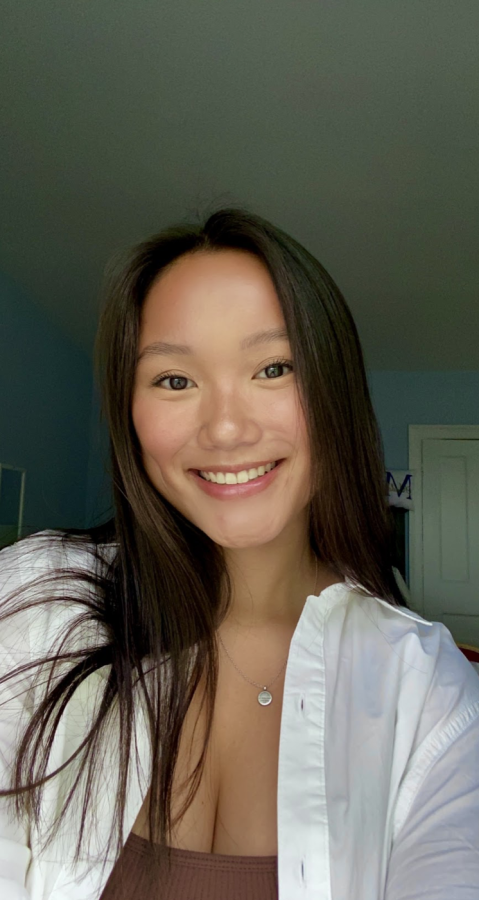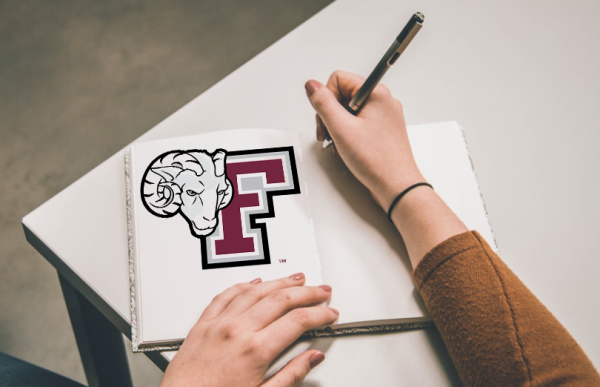Fordham Senior Researches Computational Chemistry
Madeleine Marrone, FCRH ’23, is currently conducting a computational chemistry research project. Her work revolves around using machine learning to predict the composition of organic mixtures using infrared spectroscopy.
Marrone, a chemistry major, creates mixtures of organic compounds like ethanol, methanol and water, and analyzes the composition of these mixtures with infrared spectroscopy. She then compares this analysis with an analysis of the mixture created with a machine learning model that is supposed to be able to read the spectrum and make predictions about how much of each species is found in the mixtures.
“Machine learning models are algorithms that are usually commonly built into different coding languages. There’s a couple that are pretty universal throughout different coding languages; so I’m working with another student and he did a lot of his coding in Python, and I did mine in a different software called Mathematica, and so we did the same algorithms, just with different coding languages,” said Marrone.
To prime the software, Marrone gave the algorithm a set of data with a known association; in this case, she used a set of mixtures for which the composition of each species was known. This helps to train the algorithm to make associations about the data. After this, she would then give the algorithm mixtures where the composition of each species was unknown to see what the algorithm would return back to her. This data that Marrone gave the algorithm consisted of a certain wavelength and absorbance value.
Marrone has conducted this research as a part of a lab run by Joshua Schrier, Ph.D. On a day-to-day basis, a lot of Marrone’s work has revolved around coding, working on building the algorithms and a data set that she could then feed to the algorithms.
“I collected some of the experimental data this summer with [Christopher Aubin, Ph.D.] and the summer research program, and we realized that some of the data I had collected experimentally was not lining up with data that we computationally simulated… and so that was a problem because if the experimental data wasn’t going to match up with simulated ‘fake’ data, then we might need to reevaluate how we created the original data set.”
Because of this issue, this semester Marrone has shifted towards trying to collect more experimental data more efficiently by automating the process with a syringe-pump system, which would eliminate the need to have someone in the lab at all times collecting the data.
Marrone first became involved in this research when she was looking for a lab to join her junior year. Schrier had been one of her advisors since freshman year, so she reached out to him and started learning more about computational chemistry and the ways that machine learning can be applied. From there, Marrone came up with the idea of doing a project centered around purity. “I have an interest in controlled substance analysis for a forensic chemistry type of discipline, and that is a lot of what goes into that, like making sure that what you’re being told is in a product is actually the percentage that’s in a product; so I thought it would be interesting to completely computerize this process and maybe make it easier and more efficient.” Currently, these types of processes have to be done manually, which is very labor-intensive, so working towards computerizing the process would be a great step forward.
In general, Marrone said she’s glad to have had the opportunity to develop coding skills especially as many employers are looking for people with these types of skills and experience. This research project has also helped her narrow down what she might want to do in the future, and she said she is excited about what this research could mean in terms of its wider scope. “And even thinking about broader applications, could this be applied to drug discovery, could that be a totally different field, like what other ways can this be applied?”












































































































































































































